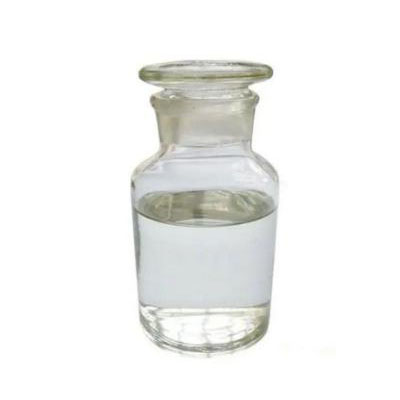- English
- Español
- Português
- русский
- Français
- 日本語
- Deutsch
- tiếng Việt
- Italiano
- Nederlands
- ภาษาไทย
- Polski
- 한국어
- Svenska
- magyar
- Malay
- বাংলা ভাষার
- Dansk
- Suomi
- हिन्दी
- Pilipino
- Türkçe
- Gaeilge
- العربية
- Indonesia
- Norsk
- تمل
- český
- ελληνικά
- український
- Javanese
- فارسی
- தமிழ்
- తెలుగు
- नेपाली
- Burmese
- български
- ລາວ
- Latine
- Қазақша
- Euskal
- Azərbaycan
- Slovenský jazyk
- Македонски
- Lietuvos
- Eesti Keel
- Română
- Slovenski
- मराठी
- Srpski језик
How does Delta Nonalactone Cas 3301-94-8 impact food flavoring?
2024-10-14

What are the uses of Delta Nonalactone Cas 3301-94-8 in food flavoring?
Delta Nonalactone Cas 3301-94-8 is used in a wide range of food products to improve the sensory properties. Its unique scent is similar to coconut and peach, which makes it a popular flavoring agent. It is widely used in dairy products such as ice cream, milk, and yogurt. It is also used in baked goods such as cakes, cookies, and pastries to improve the aroma.
How does Delta Nonalactone Cas 3301-94-8 impact food flavoring?
Delta Nonalactone Cas 3301-94-8 has a strong impact on the sensory properties of food. Its unique scent enhances the aroma and flavor of food. It is also a potent flavoring agent, which means that only a small amount of this compound is needed to achieve the desired result. Its unique properties make it a popular choice among food manufacturers and chefs alike.
Is Delta Nonalactone Cas 3301-94-8 safe for consumption?
Yes, Delta Nonalactone Cas 3301-94-8 is generally recognized as safe for consumption by the US Food and Drug Administration (FDA). It is used in many different types of food products and has been shown to be safe when consumed in the amounts commonly found in food.
What are the side effects of consuming Delta Nonalactone Cas 3301-94-8?
There are no known side effects of consuming Delta Nonalactone Cas 3301-94-8 in the amounts commonly found in food. However, as with any food or food additive, some people may have an allergic reaction to this compound. If you experience any symptoms such as itching, swelling, or difficulty breathing after consuming food containing Delta Nonalactone Cas 3301-94-8, seek medical attention immediately.
Can Delta Nonalactone Cas 3301-94-8 be used in non-food products?
Yes, Delta Nonalactone Cas 3301-94-8 has a wide range of uses outside of the food industry. It is also used in the production of perfumes, cosmetics, and other personal care products due to its pleasant scent. It is also used as a fragrance in candles and air fresheners.
In conclusion, Delta Nonalactone Cas 3301-94-8 is an important compound in the food industry. Its unique scent and flavor-enhancing properties make it a popular choice among food manufacturers and chefs. It is generally recognized as safe for consumption by the US FDA and has no known side effects. Its uses also extend beyond the food industry, where it is used in perfumes, cosmetics, and other personal care products.
Kunshan Odowell Co.,Ltd. is a company that specializes in the production of food additives and other chemical products. Our products are of high quality and are used by many major food manufacturers around the world. For more information on our products, please visit our website at https://www.odowell-biotech.com. If you have any questions or would like to place an order, please contact us at Shirleyxu@odowell.com.
Scientific Research Papers:
1. Sosa-Morales, M. E., Delgado-Olivares, L., Villegas-Ochoa, M. A., & González-Córdova, A. F. (2016). Effects of Delta-Nonalactone concentration on processability, microstructure, and sensory properties of low-fat stirred yogurt. International Journal of Food Properties, 19(9), 2047-2058.
2. Qi, X. H., Zhou, Q., Zhu, L. J., Shen, G. Y., & Mao, L. J. (2013). Microencapsulated Delta-Nonalactone: Preparation and Characterization. Journal of food science, 78(6), C832-C838.
3. Han, J., Li, B., Zhao, Y., & Sun-Waterhouse, D. (2018). Characterisation of the effect of Delta-Nonalactone and Delta-Decalactone on the flavour stability of pasteurised strawberry juice. Food chemistry, 268, 319-327.
4. Zeng, X. A., Wang, Q., & Sun, D. W. (2015). Combination of headspace-solid phase microextraction (HS-SPME) and response surface methodology (RSM) for optimizing flavor quality of Delta-Nonalactone in milk. Food analytical methods, 8(5), 1152-1162.
5. Nagy, K., Levente, S. G. V., Böszörményi, A., & Adányi, N. (2018). Coupling gas chromatography-olfactometry with multi-criteria decision making for analysis of the sensory properties and perceived consumer acceptance of Delta-Nonalactone. Journal of Chromatography B, 1092, 244-249.
6. Luo, X., Liu, F., Li, B., Sun-Waterhouse, D., & Zhao, M. (2016). Effects of Delta-Nonalactone and Delta-Decalactone on the sensory characteristics of fruit juices. Journal of food science and technology, 53(1), 831-838.
7. Zeng, X. A., Wang, Q., & Sun, D. W. (2015). Application of response surface methodology for the optimisation of flavour quality of milk containing Delta-Nonalactone. International Journal of Dairy Technology, 68(1), 121-129.
8. Luo, X., Liu, F., Li, B., Sun-Waterhouse, D., & Zhao, M. (2016). Characterisation of aroma-active and phenolic profiles of pasteurised yellow peach nectar added with Delta-Nonalactone and Delta-Decalactone. Journal of the Science of Food and Agriculture, 96(6), 2112-2120.
9. Wang, Y. L., & Zhong, Y. (2013). Synthesis, identification and sensory evaluation of Delta-Nonalactone-based γ-valerolactone derivatives as coffee aroma additives. Journal of the Science of Food and Agriculture, 93(3), 747-752.
10. Zhao, Y., Li, B., Sun-Waterhouse, D., & Han, J. (2017). Probing the effect of Delta-Nonalactone and Delta-Decalactone on the shelf-life and sensory properties of pasteurised strawberry juice. International Journal of Food Science & Technology, 52(5), 1256-1264.



